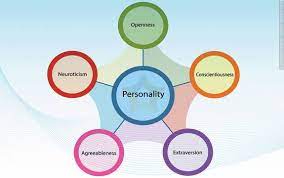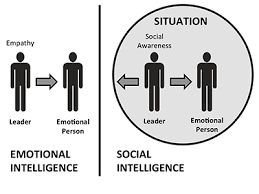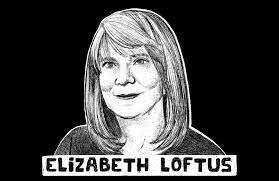Milgram Experiment reveals that the majority of people are willing to obey an authority figure by following instructions to perform acts that conflict with their coincidence. Besides , the Lord of Flies is a real example of obeying authority. This is because the Lord of Flies shows that boys are willing to follow any chain of command. The connections show that there are less evil people than good. However, society acts as the foundation of a person’s wrongdoing or evil.
Milgram Experiment assessed people’s reaction told to give a painful electric shock, while in the Lord of Flies by William Golding readers are introduced to actors of evil and good. The study shows that despite many individuals being useful in the world, only a few are great.
The purpose of this study is to show how William Golding in the Lord of Flies connects with Milgram Experiment themes to demonstrate how people are willing to obey orders from an authority figure. The paper provides a clear analysis of the link between the Lord of Flies and Milgram Experiment and the implications it has on the modern day leadership style and how people are willing to obey a chain of command from an authority figure.
Milgram’s Experimet Theoretical Framework
Milgram Experiment was carried out to show how people obey authorities under all circumstances, especially people who instructed them to perform acts that conflict the coincidence of purposes. The purpose of Milgram Experiment was to give students electric shocks by separating them from the subject and establishing a tape recorder, which was integrated with electronic shocks. Therefore, if the answers were inaccurate, the teacher would administer a shock to the learner by an increasing voltage for each wrong answer, while for the correct answer, the teacher would go to the next word pair.
Milgram Experiment was in a controlled setting such that the learner could not attempt to quit the experiment, which led to the establishment of status and authority (Batson and Daniel, 2016,10). Milgram Experiment showed factors that affect obedience. For instance, the status of location showed that prestige of location increase obedience, while less personal responsibility increases obedience. Besides, individuals tend to obey others if they acknowledge their authority as legally based or/and morally right.
Thus, the uniformity of the authority figure can provide people with status as well as peer support or presence of others disobeying the authority figure decreases the obedience level. Milgram Experiment showed that proximity to authority plays a significant role in obedience as people can easily resist orders from authority if they are not nearby (Haslam and Stephen, 2017, 63).
In Milgram Experiment, the teacher does not know that the shocks are not real, and the student behind the participation is in the experiment working with Milgram. Besides, the learner is getting words pairs incorrect on purpose, making the experiment fake despite showing the importance of obeying authority. Therefore, the actual experiment is on the teacher.
Despite the increased yelling by participants, they continue to finish the experiment. As much as many participants wished to stop, Milgram used four phrases to entice them to finish the exercise. The motivating phrases were, “please continue, the experiment requires you to continue, it is necessary for you to continue and you have no other choice, you must go on (Haslam, Nick, Loughnan, and Perry, 2014).”
The Lord of Flies by William Golding introduced characters of evil and good. The study shows that despite many individuals being useful in the world, only a few are great. This is because people control how their environment influences their actions and behaviors. During the feast, Jack sat like a leader and idol as he issued commands such as who was going to join his tribe. [ (pg #?). ] Through his command and leadership authority, most of the boys accepted because they wanted meat and protection from Jack.
Besides, despite Jack punishing Wilfred for no particular or apparent reason, Roger and the rest of the boys of the tribe felt nothing wrong about it. This is because none of the boys had the courage or confidence to stand up for Wilfred. Therefore, the Lord of Flies by William Golding showed that people have a fear of authority and quickly give up justice. Moreover, Jack and Roger tortured Eric and Sam, forcing them to submit to Jack’s command and join his tribe. This shows that authority forces the weak people to follow them using violent action and false use of authority.
The failure of Jack to admit that he took too much power and authority shows that influential leaders are not willing and lack the courage to admit mistakes such as enslaving others. The analysis of the Lord of Flies shows that civilized officers are part of an adult world in which violence and war are associated with social order and civilization. People are expected to obey authority as influential leaders do things to destroy the peaceful world, similar to what Jack did to the boys and vice versa.
Connections
The comparison of Milgram Experiment and the novel of the Lord of Flies show that the boys feared the beast referred as the electronic shocks, while they allowed Jack to gain power and authority through obedience to his command. The review shows that it is easier to control people and persuade them to be savagery by obeying the experiments. This is because the boys followed the authority or command to get protection or avoid the electric shock.
The connection between Milgram Experiment and the novel of the Lord of Flies is evident in that both boys follow the order to obtain protection or avoid electronic shocks. For instance, the boys are stranded and end up following the commands from Jack without comprehending the reasons for doing it. Besides, from both sets of experiments, it is evident that people follow orders without questioning the consequences or impacts on the other party.
William Golding in the Lord of Flies presents the obedience idea in Milgram Experiment through the connections of actors take as a leader, Jack, and Ralph, and the other actors who ideally obey the leader’s command or orders without questioning. This connection shows how people or kids are ready and willing to obey the authority figure that has leadership skills. Besides, both Lord of Flies and Milgram Experiment present the obedience idea through leaders and the ones who unthinkingly follow commands and believe that they should be led.
People who want to be led wait for commands and orders to follow and they believe they need to be directed by a leader as Jack demonstrated by allowing characters to follow him without question. This undeniably connects with Milgram Experiment on obedience. This is because according to the Milgram Experiment, persons are possibly to obey commands by authority figures. Therefore, the robust scenarios of obedience on the Lord of Flies are indicators of Milgram Experiment.
The novel on the Lord of Flies presents the obedience theme, which is accurately connected, to Milgram Experiment on obedience. This is because many instances demonstrate the obedience theme. For instance, Jack is the leader of a group of hunters in a jungle who target to kill a pig, and the group follows him to the jungle without questioning and obediently. The boys have drifted away with the words of command such as “kill the pig,” “cut her throat. Spill her blood”(Laurent et al., 2015, 300).
It is evident that the kids are carried away with the obedience feeling as hunters and Jack manipulate the boys’ fear of the beast, making them obey him even further for protection and safety. The boys not only see Jack as a powerful leader but also obey him without question. Besides, there are other particular moments during the hunting game where Jack uses is authority and command to instill fear in the boys as they obey him unquestioningly. These instances in the novel of the Lord of Flies present how far the obedience feeling can take people.
The kids lose their morality and rational thinking by following commands. Despite the increased use of command, which instills fear and obedience to the boys, the sense of obedience goes off-limits, which signals that things can easily go out of control. Jack who is their leader for the sake of security and food because the boys do everything tells this. Thus, the novel by William Golding in the Lord of Flies presents the idea obedience in Milgram Experiment as it shows that without no doubt individuals will obey commands from others if they perceive them as leaders or authorities (Branson and Buckroyd, 2017, 20).
William Golding presents the obedience idea in Milgram Experiment in the final chapter of the Lord of Flies. In the last chapter of the Lord of Flies, there are clear instances where the boys obey authority figure as well as carrying them to higher levels. It is evident when Jack acts as a leader and as an idol giving commands during the feast where the boys obey the orders without question. Jack commands the boys to join his tribe, and all except Ralph agree to the idea. However, the reason behind Ralph objection is because he is supposedly the chief.
The sense of obedience manifested in Milgram Experiment is present in this scenario as all hunters obey Jack and fail to either object or to question the idea of being a tribe. Despite Wilfred getting punished for no apparent reasons, Roger and the rest of the boys of the tribe do not feel it or question for a reason for the punishment. This shows that they lacked courage and confidence to stand up for Wilfred because their submission and loyalty to their authority blocks them.
Even though Ralph wants to call for an assembly to question Jack, the boys once again prove their obedience and loyalty to their authority figure. Instances of obedience in the novel of the Lord of Flies stem from the idea of obedience from Milgram Experiment. In both groups of boys, they accept the command or authority figure by carrying out the orders issued to them by the leader or teacher.
For instance, if the boys are told to eat, they eat, and if told to fetch something for the leader, they do so. Also, they sit down when told to do so and even if the leader says they should be punished, they accept it without question. This result significantly connects with obedience from Milgram Experiment (Gridley and Jenkins, 2017, 25).
Milgran experiment Critical and Relevance
William Golding successfully puts the obedience idea in the Lord of the Flies novel by installing Jack as the leader. Jack is obeyed, and his subjects follow his commands or orders without questioning. The connections of two scenarios show that philosophic and legal aspects of obedience are of enormous importance. The excessive willingness of people to go to any level in the order of authorities constitutes the main findings of research and the idea that most directly demands full justification.
The study shows that people with authority tend to control the outcome and actions of others. The experiments reveal that a more significant part of people are just willing to comply with authority figures who directs merely them to execute acts that may vary or conflict with their individual coincidence, while the Lord of Flies by William Golding is a real example of obedience to authorities because the people are willing to obey any chain of authority (Hollander, 2017, 430). \
We live in a world where people demand obedience from the authority for them to function well for a society. However, obedience can have significant impacts on a society because authority figures have little to justify actions. Thus, conformity is an impact that influences people to do things they may not have otherwise done. Evidence shows that both obedience and conformity lead to atrocious actions. Therefore, horrendous crimes against humanity have happened and yet people fail to question the actions of authority figures.
The experiment shows that discipline and obedience are learned through social conventions. Thus, individuals are able of substantial evil and great good according to the circumstances they are positioned in. in addition, acts of both resistance and obedience have the power to motivate and inspire people to obey commands of an authority figure.
Conclusion
From the connection between Milgram’s Experiment and Lord of Flies, several factors force people to carry obedience to the extreme, even without questioning the command. People justify their behavior be assigning responsibility to authorities rather than themselves, and they define their behavior which is expected of them as a routine. Besides, evidence from the experiment shows that people do not want to offend or be rude to authority and they obey orders. Therefore, it is essential for people to question orders and reasons behind their issue.
This will ensure that obedience is acknowledged and is not adhered out of fear. The results show how people follow orders and obey leaders without question. This is a disappointing aspect of leadership style as the leaders directly threatened people in order to guarantee the protection and security.
References
Batson, Charles Daniel. What’s wrong with morality?: A social-psychological perspective . Oxford University Press, 2016: 2-25
Bègue, Laurent, et al. “Personality Predicts Obedience in a Milgram Paradigm.” Journal of Personality 83.3 (2015): 299-306.
Branson, Jane, and Peter Buckroyd. Lord of the Flies, William Golding: Workbook. Oxford University Press, 2017: 10-30
Gridley, Mark, and William J. Jenkins. Obedience to Authority. Macat Library, 2017: 20-27
Haslam, Nick, Steve Loughnan, and Gina Perry. “Meta-Milgram: An empirical synthesis of the obedience experiments .” PloS one 9.4 (2014): e93927.
Haslam, S. Alexander, and Stephen D. Reicher. “50 Years of “Obedience to Authority”: From Blind Conformity to Engaged Followership.” Annual Review of Law and Social Science 13 (2017): 59-78.
Hollander, Matthew M. “The repertoire of resistance: Non‐compliance with directives in Milgram’s ‘obedience’experiments.” British Journal of Social Psychology54.3 (2015): 425-444.
Place your order on Best Essay Writers









